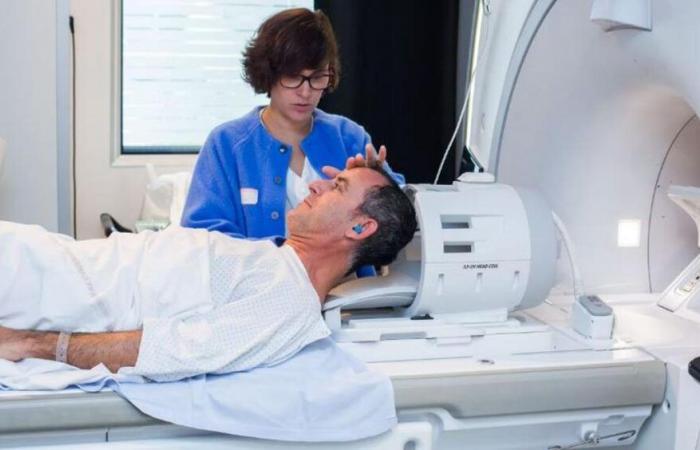“An ischemic stroke is caused by a clot that migrates from the carotid artery and blocks blood flow in the brain, thus killing neurons. Today, we know how to see large clots in MRI (magnetic resonance imaging, editor’s note)” recalls Mr. Bonnard, “on the other hand, we did not know how to detect the smaller clots, or “microthrombi”. The PHySIOMIC contrast agent is made up of microparticles of iron oxide and polydopamine: an assembly of molecules of the neurotransmitter dopamine by which neurons usually communicate, used here as a material. Once injected into the bloodstream, it will attach to the microclot and will be visible on MRI thanks to its magnetic properties.
“Like a mussel to its rock”
There are “concerns” with the contrast agents currently used based on Gadolinium, “associated in the past with certain risks of renal complications”, according to Thomas Bonnard. This is not the case, according to the researcher, of PHySIOMIC: “it will never have toxic effects, since it exclusively uses materials that are already present in the body”. The “MIC” in PHySIOMIC stands for “Mussel Inspired Clusters” because the mussel, to attach itself to its rock, also uses dopamine. “When we inject something into the blood, proteins “clump” on it and participate in attaching to the microclot,” describes Charlène Jacqmarcq, 30 years old.
This post-doctoral student at BB@C sits in front of a “microfluidic station”: a network of tubes and pumps responsible for reproducing the blood system in which she “simulates strokes” on human blood recovered in partnership with the French establishment blood (EFS). Once identified, the microthrombi must be destroyed, research carried out by Audrey Picot, a 27-year-old doctoral student at the BB@C laboratory, who adds a tissue plasminogen activator (tPA) to PHySIOMIC.
A magnetic particle imaging scanner
The only pharmacological treatment currently provided to stroke victims, tPA presents a risk of bleeding which will be reduced by targeting the contrast agent PHySIOMIC, according to Mr. Bonnard. “We have set up a collaboration with the Australian pharmaceutical company CSL Behring, as well as Inserm Transfert, to develop this diagnostic tool and make it become a theranostic tool: this means that it will both diagnose and make visible microclots, allow their breakdown and restore blood flow in patients,” specifies Ms. Picot. Paid by Inserm from the private funds of CSL Behring, the entire team benefits from the tools of the BB@C laboratory.
“Small animal” MRI, magnetic particle imaging scanner (the 1st in France), a super resolution 3D ultrasound machine… “We don’t find this equipment concentrated in a single place in all the research centers, we’re lucky to work here,” rejoices Charlène Jacqmarcq. “BB@C was founded by Inserm, the University of Caen and the Caen University Hospital” explains Denis Vivien, 58, professor of cell biology and director of the institute, “170 people work there associated with four startups to develop new therapeutic and diagnostic strategies, mainly for stroke,” explains its founder.






